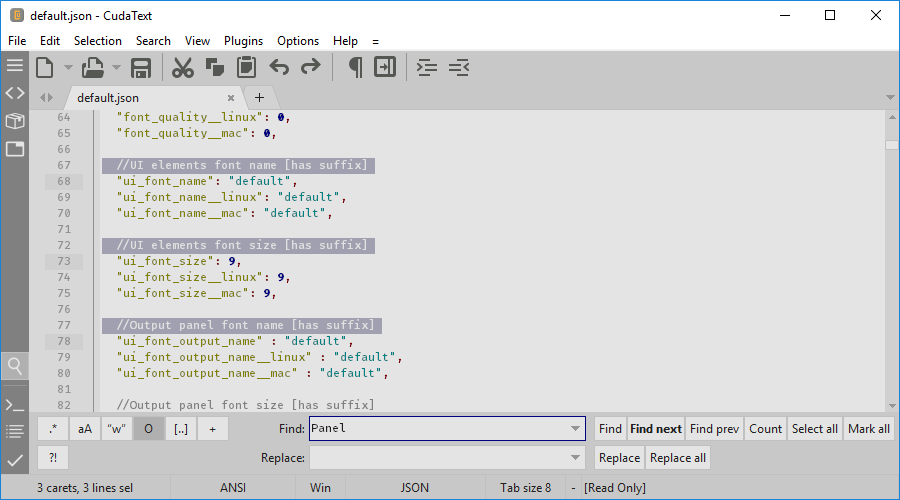- R/cudatext: Subreddit for the Amazing Cuda Text code editor.
- To conclude, CudaText is a valuable tool for developers regularly working with multiple snippets at the same time. The split view function can be a real asset in such situations and syntax.
Overview

CudaText is an open source, lightweight and cross-platform text editor written by Alexey Torgashin, who is also the author of the popular SynWrite editor. The author of most plug-ins (Python scripts) for the CudaText is Andrey Kvichanskiy.
Exec=/usr/bin/cudatext%F Terminal=false Type=Application StartupNotify=true MimeType=text/plain; Categories=Utility;TextEditor; Icon=cudatext. Make sure to change the Exec line above to match the directory where you installed it. Arch Linux also has a great way of installing CudaText. Just run: yaourt -S cudatext -noconfirm Running. CudaText is a cross-platform text editor, written in Lazarus. It is fully open source. It starts quite fast (0.5 sec with 30 plugins on CPU Intel Core i3 3Hz). It is extensible by Python add-ons (plugins, linters, code tree parsers, external tools). CudaText review by mr-qwerky (Jul 24, 2017) INTRODUCTION CudaText is both an excellent general-purpose text editor, and an advanced, feature-rich programmer's editor, from the author of SynWrite, another programmer's editor, and shares most features with it.
CudaText has a great configuration possibilities and many advanced features: syntax highlighting (for more than 160 languages), code folding, multiple carets, code structure, compiler integration, support for projects and sessions, and many more.
As a software developer, in my work I use primarily specialized programming environments like Embarcadero Delphi, Lazarus, CodeTyphon, Microsoft Visual Studio, NetBeans and Code::Blocks. But to browse source files from many projects, perform minor editing tasks, writing scripts, very useful is an auxiliary text editor. CudaText is great in such role.
The program is really lightweight. Unlike many similar editors (Atom, Visual Studio Code, Light Table), it is not based on the Electron framework and uses a relatively small amount of memory. It is very rare for CudaText to occupy 100 MB of memory, while editors based on Electron with a few open files usually occupy over 500 MB, and sometimes even above 1 GB.

I really like the CudaText and decided to design several color schemes (themes) and other additions:
Screenshots
The color of almost every element of the CudaText interface can be adapted to your needs, which can be seen in the pictures below.


Cudatext Java
Useful links
Cudatext Vs Notepad++
CudaText home page: http://uvviewsoft.com/cudatext/
Source code: https://github.com/Alexey-T/CudaText
Wiki: http://wiki.freepascal.org/CudaText
Forum: http://synwrite.sourceforge.net/forums/viewforum.php?f=20
Changelog: https://github.com/Alexey-T/CudaText/blob/master/app/readme/history.txt
